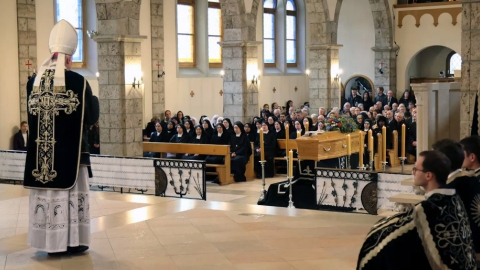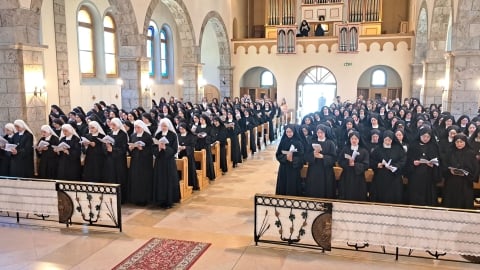Kasper: intentional ambiguities at Vatican II

Pastor's Corner for 3rd Sunday after Easter
Cardinal Walter Kasper made a stunning statement in the pages of L'Osservatore Romano this past Thursday.[1]
Firstly, we need to appreciate his sincerity. Kasper’s statement is contra to the prevailing mantra from Pope Paul VI onwards (and the blind optimism of Cardinal Dolan of New York), and thus undermines that unrealistic vision of a Church in springtime:
For most Catholics, the developments put in motion by the council are part of the church’s daily life. But what they are experiencing is not the great new beginning nor the springtime of the church, which were expected at that time, but rather a church that has a wintery look, and shows clear signs of crisis."
Then, speaking of the challenges facing the Church and the "true implementation of Vatican II", he states:
In many places, [the Council Fathers] had to find compromise formulas, in which, often, the positions of the majority are located immediately next to those of the minority, designed to delimit them. Thus, the conciliar texts themselves have a huge potential for conflict, open the door to a selective reception in either direction." (L'Osservatore Romano, April 12, 2013)
Here Cardinal Kasper is saying that the documents themselves were constructed in such a way as to permit progressive interpretations when put into the hands of progressive theologians or bishops. Here the cardinal agrees that the conflict is inherent to the texts themselves produced by the Council and not due to some later wrong interpretations of it. Contra to the conservative mantra of "perfect documents—imperfect implementation", Kasper affirms the traditionalist critique of "imperfect documents lead to imperfect implementation." In other words, there is an intimate and logical connection between the documents and their implementation.
Yet, he is affirming something even more troublesome about the good faith of the Council progressive party. He clearly indicates that these potential conflicts were part of an intentional program.[2] He does not simply say the texts will bear various interpretations, but that these ambiguous passages were "compromise formulas" brought forth to placate two opposing sides, in such a way that they can be interpreted in an orthodox manner, but just as easily can be twisted by the progressives to lend seeming support to their mischief.
He concludes in saying that, although the story of the past twenty Church councils has sometimes been confusing, he affirms that Vatican II "however, is a special case."
This affirmation needs to be placed in parallel with the letter Archbishop Lefebvre sent to Cardinal Ottaviani on December 20, 1966, just one year after the closing of the Council.
that, [almost universally], when the Council innovated, it shook the certitude of the truths taught by the authentic Magisterium of the Church as belonging definitively to the treasure of Tradition... Whether it be the transmission of the bishops’ jurisdiction, the two sources of Revelation, the inspiration of Scripture, the necessity of grace for justification, the necessity of Catholic baptism, the life of grace among heretics, schismatics and pagans, the ends of marriage, religious liberty, the last things, etc.: on all these fundamental points, the traditional doctrine was clear and unanimously taught in Catholic universities. Now, numerous Conciliar documents on these truths henceforth allow doubts."
It is rather pleasant to hear an arch-enemy of Tradition take our side to stigmatize the undercurrent which produced the studied ambiguities and errors which are pregnant in the very texts of the Council.
Footnotes
1 An English translation of the original Italian article is available from CNS correspondent, John Thavis.
2 Cf. from Angelus Press, The Rhine Flows Into the Tiber, Pope John’s Council and Time Bombs of the Second Vatican Council for details.





